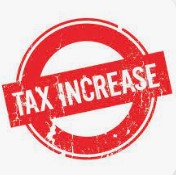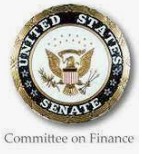 This TRM™ tax-Radar™ 7 Steps Special Report is based on over 150 lectures presented to many multi-national corporations (MNE’s) and smaller businesses (SME’s) looking to minimize one of the largest financial risks facing them: tax.
This TRM™ tax-Radar™ 7 Steps Special Report is based on over 150 lectures presented to many multi-national corporations (MNE’s) and smaller businesses (SME’s) looking to minimize one of the largest financial risks facing them: tax.
It looks at where they have failed to properly recognize the potential tax exposure they face. The case studies in this Special Report are very real, and based on years of experience. The names, places and specific details are not, so as to preserve the secrecy of the taxpayers.
One thing this Special Report will do for you is teach and guide you, step by step, that in matters of tax it is extremely dangerous not to be proactive. No matter what anyone says, tax is always, and will always remain a large expense for any successful business. States will always look to their most successful taxpayers to collect 80% of the tax from the 20% most successful taxpayers. It makes commercial sense. The balance of tax officials’ time will most probably be spent chasing after tax evaders. Read More


 A shareholder-employee’s compensation from an S corporation is often subject to IRS scrutiny because S corporation flow-through income enjoys an employment tax advantage over that of sole proprietorships, partnerships and LLCs. This advantage finds its genesis in Revenue Ruling 59-221, which held that a shareholder’s undistributed share of S corporation income is not treated as self-employment income. In contrast, earnings attributed to a sole proprietor, general partner or many LLC members are subject to self-employment taxes.
A shareholder-employee’s compensation from an S corporation is often subject to IRS scrutiny because S corporation flow-through income enjoys an employment tax advantage over that of sole proprietorships, partnerships and LLCs. This advantage finds its genesis in Revenue Ruling 59-221, which held that a shareholder’s undistributed share of S corporation income is not treated as self-employment income. In contrast, earnings attributed to a sole proprietor, general partner or many LLC members are subject to self-employment taxes.


 “U” is for unqualified options. Does this mean the options are not qualified, but not qualified for what? They don’t qualify for the incentive stock option treatment. Unqualified or non-qualified stock options result in taxable income to the recipient when they are exercised. If the stock is worth $50 a share and the option is to purchase at $32 a share, then a gain of $18 per share is recognized when the option is exercised. These are relatively easy to track and simple to account for because the company can deduct the value ($18 per share) that is income to the taxpayer.
“U” is for unqualified options. Does this mean the options are not qualified, but not qualified for what? They don’t qualify for the incentive stock option treatment. Unqualified or non-qualified stock options result in taxable income to the recipient when they are exercised. If the stock is worth $50 a share and the option is to purchase at $32 a share, then a gain of $18 per share is recognized when the option is exercised. These are relatively easy to track and simple to account for because the company can deduct the value ($18 per share) that is income to the taxpayer. On August 29, 2013, the US Department of Justice (“DOJ”) and Swiss authorities jointly announced a landmark non-prosecution program for any Swiss bank that is not a current target of US criminal investigation. On the Swiss side, the agreement with DOJ was signed by the Swiss Federal Department of Finance. The program is designed to encourage all Swiss banks to come forward and admit the role they played in assisting US persons to evade tax. Participating banks that meet all of the demands made by DOJ are eligible for non-prosecution agreements – but employees and agents of the banks are shockingly not protected.
On August 29, 2013, the US Department of Justice (“DOJ”) and Swiss authorities jointly announced a landmark non-prosecution program for any Swiss bank that is not a current target of US criminal investigation. On the Swiss side, the agreement with DOJ was signed by the Swiss Federal Department of Finance. The program is designed to encourage all Swiss banks to come forward and admit the role they played in assisting US persons to evade tax. Participating banks that meet all of the demands made by DOJ are eligible for non-prosecution agreements – but employees and agents of the banks are shockingly not protected. Location Specific Advantages (LSAs)
Location Specific Advantages (LSAs) 

















Recent Comments